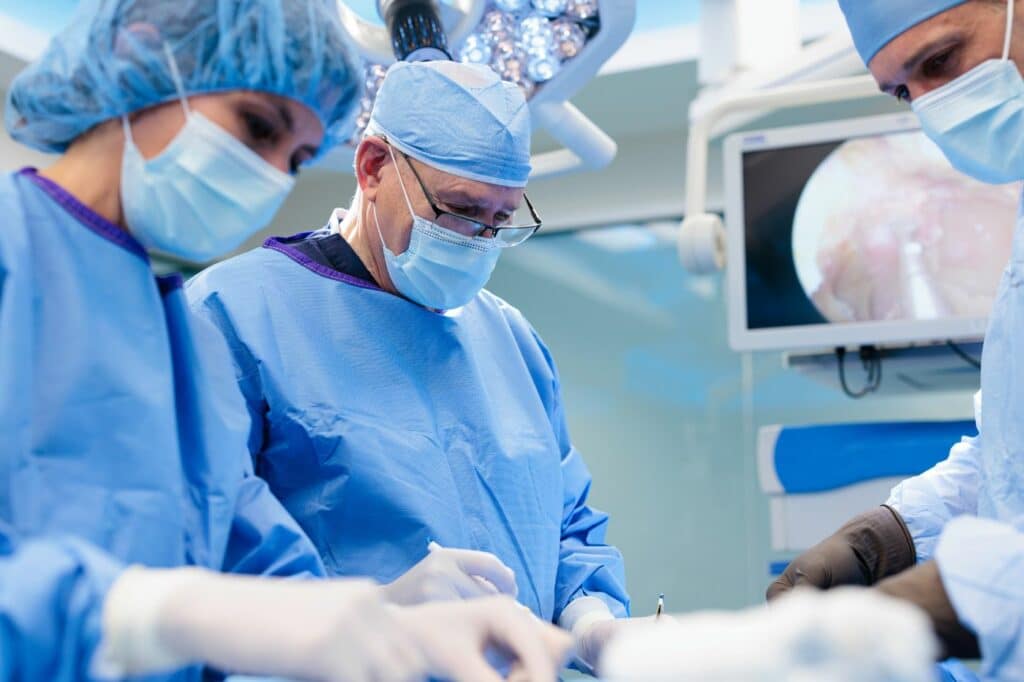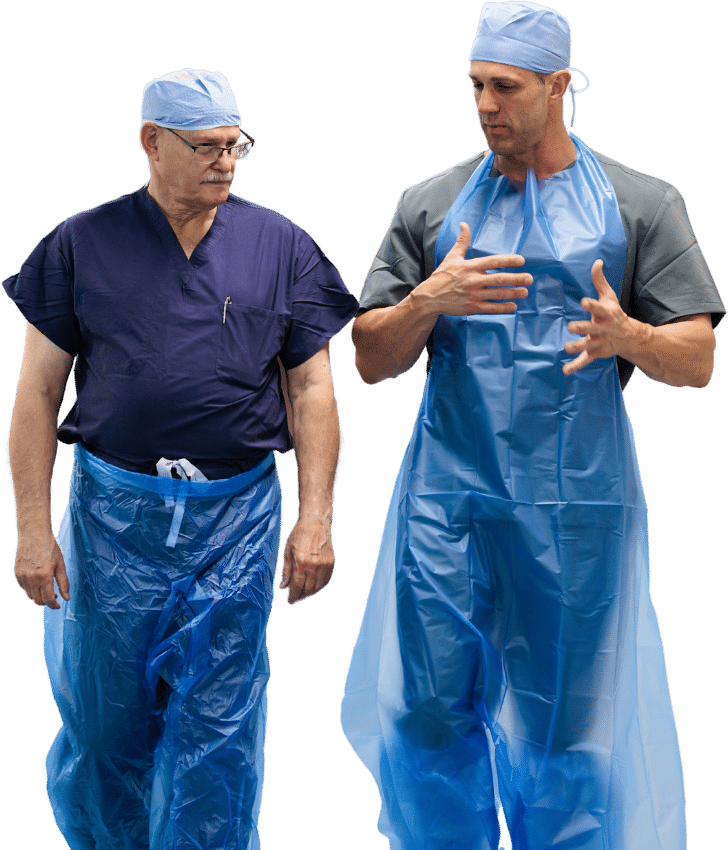What is Safe Patient Handling & Why Does it Matter?
Safe patient handling is a catchall term for the proper techniques and equipment needed to lift, transfer, and move patients in a way that prevents injury to both the patient and nurses. Injuries from improper patient handling are a common occupational hazard for healthcare workers and can result in long-term physical damage.
In hospitals and surgical clinics, safe patient handling helps to reduce the risk of musculoskeletal injuries for healthcare providers. It also ensures that patients are moved and transferred in a way that minimizes discomfort and maintains their dignity. This ultimately leads to better patient outcomes, happier staff, and a higher standard of care.
8 Benefits of Safe Patient Handling
When hospitals use safe patient handling techniques & assistive devices, it helps to keep both patients and healthcare workers safe. Some benefits include:
– Reducing the risk of injury to patients
– Decreasing the number of work-related injuries for nursing staff
– Improving patient comfort and dignity
– Increasing efficiency and productivity in patient care
– Lowering healthcare costs by preventing reinjury or worker’s compensation claims
– Creating a safer and more positive work environment for staff
– Improving the overall quality of patient care
– Enhancing the reputation of the hospital or surgical clinic
When 31 rural community hospitals in Washington State implemented a “zero lift program,” replacing manual patient lifting with lifting equipment and devices, patient handling injury claims decreased by 43 percent [14]. (journalofethics.ama-assn.org)
Overall, safe patient handling is important for the well-being of both patients and healthcare workers, and it has financial benefits for
The Hazards Nurses Face During Transfer, Repositioning, and Lifting
When transferring or repositioning patients, there are some common hazards to watch out for. These hazards go beyond physical injury, especially when there is a reasonable risk of exposure to bloodborne or fluidborne pathogens.
To prevent these hazards, using lifting devices and team-lift protocols can prevent physical injury. Lifting devices, like hoists, can help move patients safely without putting physical strain on your staff. Disposable patient transfer sheets can greatly reduce the risk of pathogen transfer and surface contamination. These single-patient, multiple-use transfer sheets provide a barrier and a lifting device in one, making it easier to move the patient and reducing the risk of exposure to pathogens.
These simple solutions can make a big difference in preventing the spread of infections and keeping everyone safe.
If You’re Thinking About Starting a Safe Patient Handling Program…
…you’re on the right track. If you need to make a case for the investment into proper equipment and training, here’s why a Safe Patient Handling Program is important:
– Prevents injuries: Moving or lifting patients can cause back and other injuries for healthcare workers.
– Keeps patients safe: Patients who can’t move on their own need to be lifted in a way that prevents injury.
– Improves efficiency: Using proper equipment and techniques makes patient handling more efficient and effective.
By starting a Safe Patient Handling Program, hospitals, clinics, and surgical centers can create a safer environment for everyone.
What Your Safe Patient Handling Program Needs to Start:
In essence, there are five key components of a Safe Patient Handling Program that will benefit the facility, the nurses, and the patients:
1. Equipment: Having the right equipment, like ceiling lifts and transfer belts, makes it easier to move patients safely.
2. Staff training: All staff should be trained in proper lifting and transferring techniques to minimize the risk of injury.
3. Policies and procedures: Clear guidelines for patient handling helps ensure that everyone is following the same safe practices.
4. Risk assessment: Regular assessments of patient handling tasks can help identify potential risks and find solutions to reduce them.
5. Communication: Open communication between staff members about patient handling challenges can help find the best solutions for each situation.
What equipment should I use to transfer patients safely?
When transferring patients, there are a few options to consider for safety and comfort. Here are two popular choices:
1. Patient Transfer Boards:
– These are rigid boards that help move patients from one surface to another.
– The patient can glide across the board, reducing the risk of injury for both the patient and the caregiver.
– They are reusable but require frequent sanitation and disinfection.
2. Disposable Patient Transfer Sheets:
– There a single-use options, and there are single-patient, multi-use sheets. The single-patient sheets are designed to be tough enough to withstand multiple transfers.
– Either can be placed under the patient to help move them to a different surface.
– They are designed to reduce friction and make the transfer process smoother and safer.
– Once the transfer is complete, the sheet is disposed of, greatly reducing the risk of infection and cross-contamination.
Consider the specific needs of your patient and your clinical environment when choosing the best option for patient transfers in your facility.
What else is available to help ensure safe patient handling?
When it comes to keeping patients safe, nurses need to have the right tools and equipment. There’s more to it than just patient transfer tools; your clinical environment may also need:
1. Lifts and hoists: These machines help nurses lift and move patients without straining their bodies.
2. Hospital beds with adjustable height: These beds can be raised or lowered to make it easier for patients to get in and out.
3. Wheelchairs and mobility aids: Nurses should have access to wheelchairs and other devices to help patients move around safely.
4. Gloves and other personal protective equipment: These items protect both nurses and patients from the spread of germs and infections.
By having these aids and equipment available, nurses can ensure that they can safely handle and care for their patients without putting anyone at risk for injury.
5 Top Tips for Nurses Who Want to Master Safe Patient Handling
As a nurse, it’s important to know how to handle patients to avoid injuries safely. from body mechanics and team lifts to participating in regular safety training, here are five tips to keep in mind:
DIY at Home – Not at the Clinic:
DIY might be fine when it comes to home decor and car repairs, but at the hospital or surgical center, nurses need to look out for each other. Never try to move a patient alone. It’s important to have help. Don’t forget:
– Moving a patient alone can cause injury to the nurse.
– Nurses also risk injury to the patient.
– Patients may fall or be dropped if moved by only one person.
Always use the proper equipment and ask for help when moving a patient. Healthcare workers should always have a lift team and equipment available to make lifting, transferring, and repositioning patients the safest it can be.
Body Mechanics are Important. Equipment is, too.
Body mechanics involves the coordinated effort of muscles, bones, and the nervous system to maintain balance, posture, and alignment during moving, transferring, and positioning patients.
When it comes to moving patients, using proper body mechanics is important… but it’s not enough to keep everyone safe.
Sometimes, patients are too heavy, or they move suddenly. Body mechanics can’t always protect against that. Sometimes, there isn’t enough space to move a patient safely.
That’s why having, and using the proper equipment is important, too. Using the right tools can make patient handling safer. Use lifts, hoists, belts, and patient transfer sheets or boards to make it safer for the patient, and easier on your knees and back.
Getting Hurt at Work Can’t Be “Part of the Job”
Health care workers are dedicated to taking care of others. But sometimes, on-the-job injuries can turn these vital members of the team from caregivers into patients. Injuries and pain should never be accepted as “part of the job.”
Nurses and health aides deserve to feel safe at work, and safe patient handling programs can ensure that the workplace is safe for everyone.
Safety measures like proper training and equipment can help prevent injuries.
Report Any Pain or Injury ASAP
When a nurse gets injured at work, it’s important to report it right away. Here’s how to do it:
1. First, get medical help if needed.
2. Tell your supervisor about the injury.
3. Use the right form to report the injury.
4. Write down all the details about how the injury happened.
5. Make sure to report the injury as soon as possible.
Nurses should report injuries to:
– Their supervisor
– The Human Resources department
– The Occupational Health and Safety department
Nurses need to report their injuries quickly so that they can get the help and support they need.
Learn How to Use the Assistive Devices in Your Facility
Knowing how to use the assistive devices available in your hospital or surgical center can help you prevent injuries. Learn to use all the assistive devices available in your healthcare facility, such as:
– Mechanical lifts: This device helps transfer non-ambulatory patients from one place to another, reducing the strain on the nurse’s body.
– Sit-to-stand lifts: This device assists patients in standing up from a seated position, reducing the risk of falls and injuries.
– Slide sheets: These sheets are placed under patients to help with repositioning and transferring them from one surface to another.
– Transfer belts: These belts provide a secure grip for nurses to assist patients with walking or moving from one place to another.
– HoverMatts: This air-assisted transfer device reduces friction and makes moving patients across different surfaces easier.
Implementing these assistive devices in your facility can greatly improve the safety and well-being of both patients and nurses.
Is Your Facility Safe for Patients & Nurses?
When it comes to patient safety, hospitals, clinics, and surgical centers have a long list of responsibilities.
How does your hospital’s safe patient handling program measure up? Are patients being moved and handled safely? Are healthcare workers trained properly in Safe Patient Handling techniques?
OSHA has provided guidance to help you rate your facility’s Safe Patient Handling Program. Use this brief questionnaire to examine the number and nature of patient handling injuries in your hospital, identify what you are already doing well, and identify opportunities for improvement.
Compare Patient Transfer Options
Your facility has a lot of choices when it comes to the assistive equipment and PPE that protect your staff and patients. It can be tough to decide which option is right for your practice.


